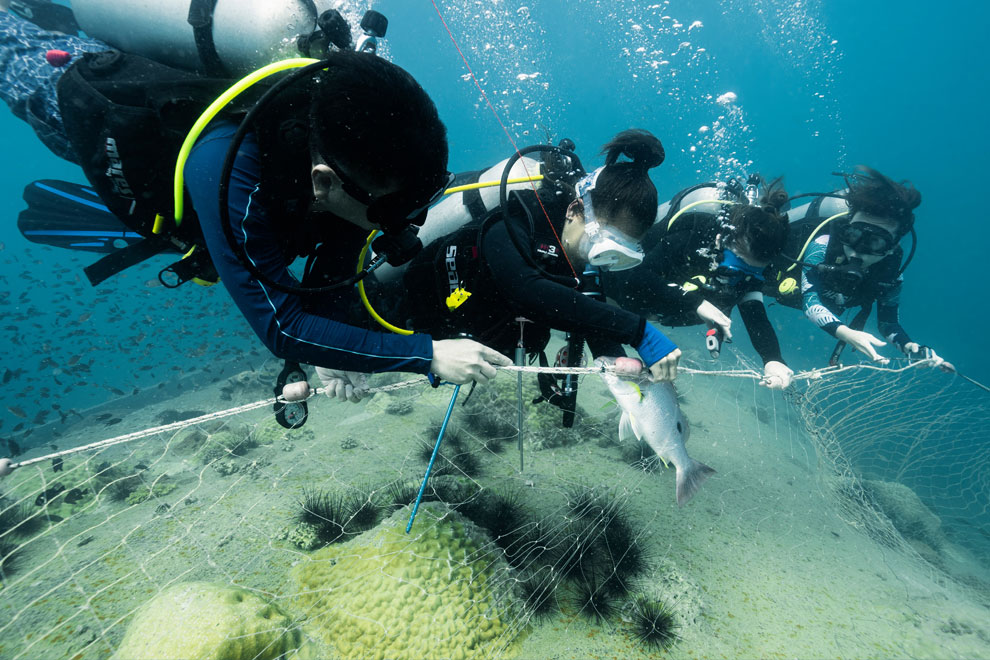From the beautiful beaches and marine biodiversity that draws millions of tourists a year to a thriving fishing industry that supports local economies, the ocean is a critical part of Mexico history, culture, and economy.
From the beautiful beaches and marine biodiversity that draws millions of tourists a year to a thriving fishing industry that supports local economies, the ocean is a critical part of Mexico history, culture, and economy.
From the beautiful beaches and marine biodiversity that draws millions of tourists a year to a thriving fishing industry that supports local economies, it should come as no surprise that the ocean is a critical part of the country’s history, culture, and economy. In 2023, for example, Mexico recorded over 1.7 million metric tons in total fish catch.
Unfortunately, a threat to Mexico’s fishing industry and marine biodiversity lurks beneath the waters – abandoned, lost, or otherwise discarded fishing gear (ALDFG), also known as “ghost gear.” Results from the first multi-institutional ghost gear removal program in the vaquita marina area launched in 2016, showed that more than 1,300 nets were removed from the Northern Gulf of California (Sea of Cortez) as of 2020.This removal effort inspired others and showed the need for more research in order to more effectively conduct gear removals in the state.
In 2021, the Global Ghost Gear Initiative (GGGI) worked with Natural Resources Consultants, Pronatura, and Manta Caribbean Project to develop the first ghost gear predictive model in Mexico. This project created a list of likely locations where fishing gear is lost and accumulates the most. The results showed that in the Mexican Atlantic, the most prominent high-probability area is along the east and northeast coast of Quintana Roo, and in the Mexican Pacific, along the coast of Sinaloa, Nayarit, Chiapas, and Sonora.
Ghost gear poses a huge problem for both wildlife and fishers alike. Fish and other marine life can get entangled in nets or trapped in pots, leading to their eventual death. Ocean Conservancy research has shown that ghost gear is the single deadliest form of marine debris to marine life. Some estimates show that an up to 30% decline in some harvestable fish stocks can be attributed to ghost gear. In addition to entanglement threats, some 1,300 marine species have been documented ingesting plastics. When swallowed, ocean plastics can block digestive tracks and eventually kill marine animals of all sizes.
Entanglement and ingestion are perhaps the most obvious threats, but they’re not the only ones. When larger plastic items, including ghost gear, break down due to weather or UV exposure, they become smaller and smaller plastic fragments and eventually microplastics. A review of research published from 2019-2020 revealed that 60% of fish studied globally contained microplastics. In animals, swallowing microplastics has been shown to negatively impact feeding, reproduction, and other behaviors, and even damage cells and DNA.
The ghost gear issue isn’t unique to Mexico: ghost gear is a problem anywhere fishing takes place.
But luckily, in recent years, momentum has grown to combat ghost gear. Since 2015, 23 national governments, including Mexico, and over 130 organizations from academia to the private sector have joined Ocean Conservancy’s Global Ghost Gear Initiative, the world’s largest alliance dedicated to tackling the issue of ghost gear at the global level.
In response to Mexico joining the GGGI, the GGGI created the North American Net Collection Initiative (NANCI) - the first-ever transboundary initiative to prevent ghost gear in the coastal waters of the United States, Mexico, and Canada. The GGGI is also working closely with the government of Mexico and the ICCF Group to create national legislation to address ghost gear at the executive and legislative levels in Mexico.
While we are proud of this progress, it’s critical that more countries join the fight to address ghost gear at the national levels with action planning and progressive legislation; and international levels like the Plastics Treaty.


 Regional Headquarters
Regional Headquarters